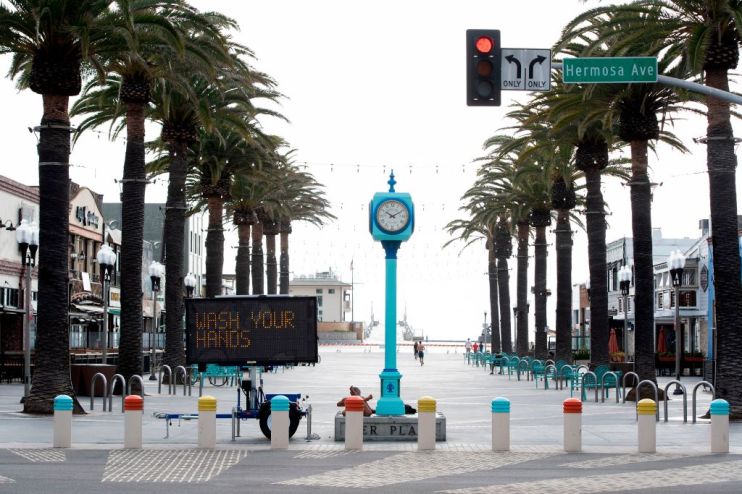US economy shrinks at fastest pace since financial crisis

The US economy shrank at its fastest rate since the financial crisis in the first three months of the year as coronavirus hammered the country, figures have shown, although analysts warned worse is yet to come.
US GDP shrank at an annualised rate of 4.8 per cent in the January to March period, the Bureau of Economic Analysis (BEA) said today. The figure was worse than economists had expected.
The coming recession – technically two quarters of contraction – will bring to an end more than a decade of growth in the world’s biggest economy. US GDP had increased 2.1 per cent in the final quarter of 2019.
The economy was pummeled in the final two weeks of March, when states imposed restrictions to limit the spread of coronavirus
Lockdowns “led to rapid changes in demand, as businesses and schools switched to remote work or canceled operations, and consumers canceled, restricted, or redirected their spending,” the BEA said.
Consumer spending, the powerhouse of the US economy, plunged as demand evaporated amid coronavirus restrictions and as people lost their jobs. Personal consumption expenditure dropped 7.6 per cent, according to the BEA.
Spending on durable goods plummeted 16.1 per cent, although spending on nondurables such as food rose 6.9 per cent. Consumer spending on services, which make up the bulk of the US economy, plunged 10.2 per cent.
US economy to tank in second quarter
Analysts said that second-quarter GDP figures will be much worse, given that the first-quarter data only covered two weeks of lockdown.
Gregory Daco, chief US economist at consultancy Oxford Economics, said it was “the leading edge of a massive economic storm”.
“Looking ahead, we believe the US economy will experience a peak-to-trough contraction of over 12 per cent as a result of the coronavirus outbreak,” he said.
Such a contraction would be “three times the size of the global financial crisis and the sharpest economic contraction since WWII”. Some analysts have predicted a second-quarter GDP drop of more than 30 per cent.
Huge injections of money into the economy from the government and Federal Reserve have supported GDP. Congress has signed off roughly $3 trillion of stimulus and the Fed has made interventions that go well beyond its actions following 2008.
Yet unemployment has still skyrocketed, with 26m people filing for unemployment insurance in the last five weeks. Although the government has said a ‘V-shaped’ recovery is possible, the private sector is less optimistic.
The huge contraction poses a problem for US President Donald Trump about when it is best to reopen the economy.
It also comes in an election year. Robert Alster of Close Brothers Asset Management said: “This is not the economic record on which President Trump hoped to campaign for re-election.”